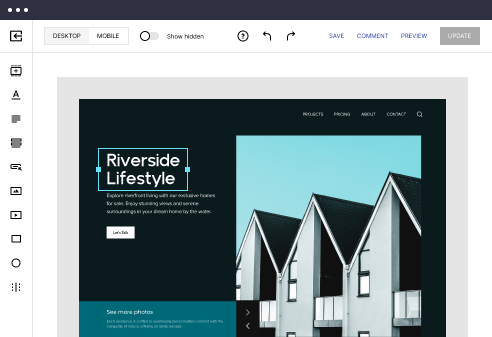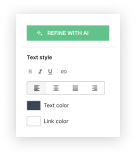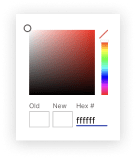
React.js optimized product features page template
Explore Similar TemplatesAbout template
Supercharge your product features page with React.js for outstanding performance! Learn more today.
Recommended templates
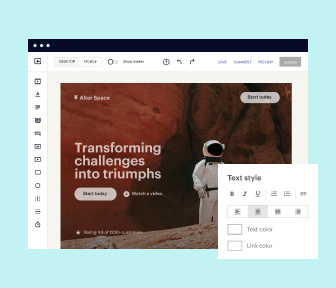
Easy to build without coding
With the intuitive drag-and-drop builder, anyone on your team can create high-converting pages without any knowledge of code or design. Make enhancements to your landing page with custom widgets using Javascript, HTML/CSS, or third-party scripts.
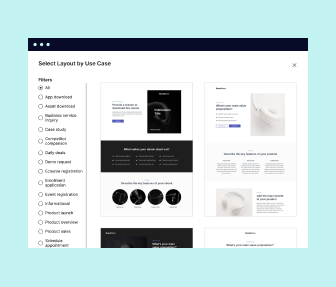
Multiple layouts for any industry and goal
Select from 500+ landing page layouts built to boost conversions across industry-specific scenarios. Customize them by adjusting fonts, adding images, and generating on-brand content with the AI assistant. Quickly scale with Instablocks® and Global Blocks that you can save, reuse, and update globally.
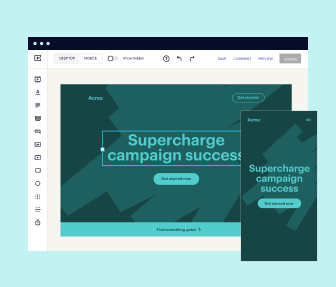
Loads fast and looks polished on any device
Every template is responsive, which means they present professionally on any device and load blazingly fast with our Thor Render Engine. You can also power them up with Google AMP technology to deliver an unparalleled mobile experience and drive higher conversions.
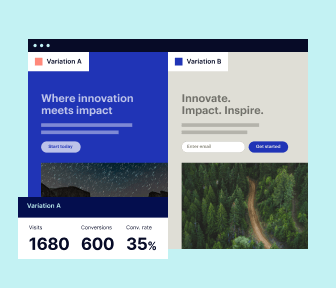
Robust analytics & experimentation
Get real-time updates and reporting across all your devices, showing the number of visitors, conversions, cost-per-visitor, and cost-per-lead. Launch AI-powered experiments, run A/B tests, and use heatmaps to analyze user behavior, then optimize your landing page to maximize conversions.

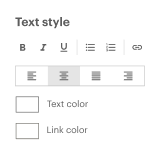
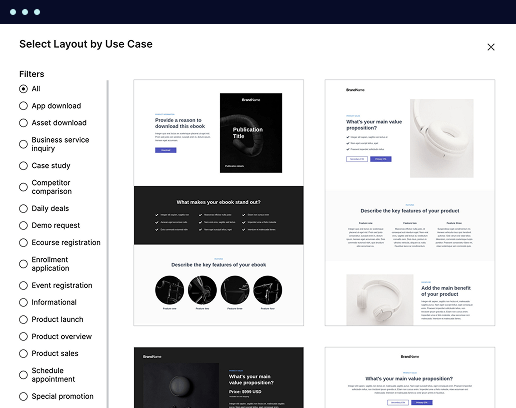
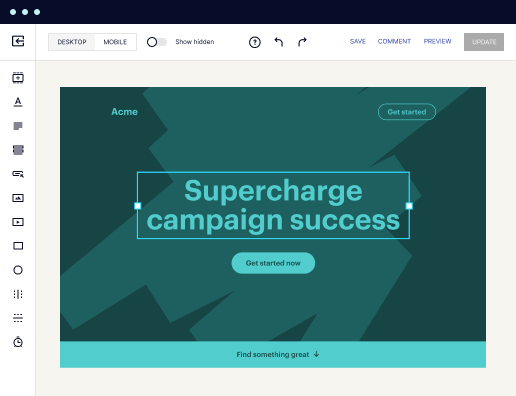
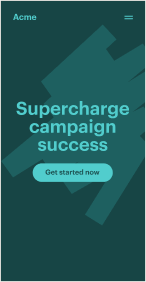
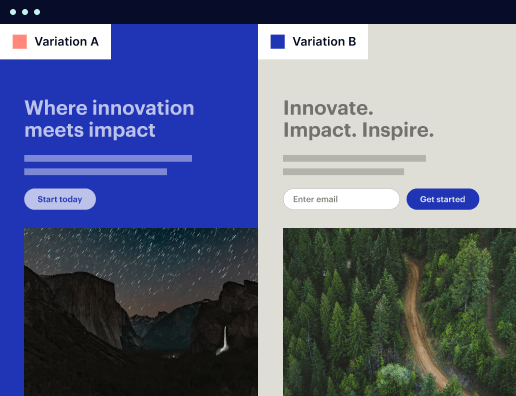

Easy to build without coding
With the intuitive drag-and-drop builder, anyone on your team can create high-converting pages without any knowledge of code or design. Make enhancements to your landing page with custom widgets using Javascript, HTML/CSS, or third-party scripts.
Multiple layouts for any industry and goal
Select from 500+ landing page layouts built to boost conversions across industry-specific scenarios. Customize them by adjusting fonts, adding images, and generating on-brand content with the AI assistant. Quickly scale with Instablocks® and Global Blocks that you can save, reuse, and update globally.
Loads fast and looks polished on any device
Every template is responsive, which means they present professionally on any device and load blazingly fast with our Thor Render Engine.
Robust analytics & experimentation
Get real-time updates and reporting across all your devices, showing the number of visitors, conversions, cost-per-visitor, and cost-per-lead. Launch AI-powered experiments, run A/B tests, and use heatmaps to analyze user behavior, then optimize your landing page to maximize conversions.
All the features you need to build lead-generating landing pages
Explore more featuresLearn how to build top-performing landing pages for any goal
FAQs
Leading the way in building high-performing landing pages





Maximizing ROI with Instapage: A step-by-step guide to landing page optimization
A successful digital marketing campaign hinges on the effectiveness of your landing pages. Instapage offers a powerful landing page and conversion rate optimization (CRO) platform that enables marketers to enhance their campaigns systematically and maximize return on investment (ROI). In this guide, we’ll dive deep into the steps necessary to leverage Instapage fully and turbocharge your marketing efforts.
Understanding the Role of Instapage in Landing Page Creation
Instapage simplifies the landing page creation process through an intuitive interface and robust features. Here’s how to effectively utilize this platform:
- Access over 100 high-converting templates designed for various industries to ensure quick deployment while maintaining quality.
- Utilize pre-built lead generation elements integrated with templates to capture information effectively without technical skills.
- Leverage the customization capabilities to tailor landing pages to your target audience and improve engagement rates.
Step 1: Designing Your Landing Page
Beginning with page design is crucial. Here are the essential actions you need to consider:
- Select a template that aligns with your campaign goals, ensuring it resonates with your audience’s preferences.
- Integrate lead capture forms that are visually appealing and strategically placed to maximize conversions.
- Use high-quality images and videos to enhance storytelling and guide your audience through the sales funnel.
Step 2: Optimize for Conversion
Once your landing page is designed, optimization becomes key. Consider these strategies:
- Conduct A/B testing to compare different versions of your landing page and identify which elements yield the best performance results.
- Utilize heatmaps to analyze user interactions and adjust the layout for improved engagement.
- Focus on personalizing content to match the interests and behaviors of your audience segments.
Step 3: Analyze and Iterate
After launching your campaign, continuous analysis is crucial. Implement the following:
- Track key performance indicators (KPIs) such as conversion rates and bounce rates to monitor the effectiveness of your landing pages.
- Adjust your strategies based on performance data, allowing for real-time optimization.
- Utilize audience-specific metrics to refine content targeting and boost relevancy.
By following these steps, marketers can effectively utilize Instapage to enhance their landing pages, ultimately leading to improved conversion rates and ROI.
Ready to start accelerating your digital marketing campaigns? Sign up for Instapage today and take advantage of its powerful tools to transform your landing page success!
ReactJS optimized product features page template
Introduction to ReactJS and its importance in modern web development
ReactJS is a powerful JavaScript library designed for building user interfaces, particularly single-page applications where responsiveness and user engagement are crucial. It allows developers to create complex UIs from small, reusable pieces of code known as components. This modularity promotes reusability and simplifies maintenance, a significant advantage in the fast-paced world of web development.
When it comes to product features pages, utilizing ReactJS can significantly enhance their performance. The dynamic nature of ReactJS ensures that updates to product features can be reflected instantly without requiring a full page reload, thus improving user experience. A well-designed features page keeps users engaged, ultimately leading to higher conversion rates.
Laying the foundation: The structure and components of a feature page
A well-structured product features page template in ReactJS involves several key components that facilitate not only aesthetics but also usability. Each component serves a specific purpose, contributing to a seamless user experience. The following are foundational components in a features page template:
Header and navigation: Crucial for guiding users through the website.
Feature highlights section: Showcases essential features in an attractive manner.
User testimonials and reviews: Builds trust by showcasing previous customer feedback.
Call-to-action buttons: Drive user actions, be it signing up, buying, or learning more.
Footer and additional links: Helps users find related information or navigate to other areas.
The component-based architecture in ReactJS allows developers to maintain these pages easier. Each component can be tested and updated independently, making scalability and future enhancements more manageable.
Optimizing performance with ReactJS best practices
Performance optimization is critical in any web application, especially in feature-rich pages where user interaction is high. To minimize re-renders, fully understanding when and how components update is essential for delivering smooth experiences. Key techniques include implementing memoization with React.memo for functional components and utilizing shouldComponentUpdate in class components. These practices reduce unnecessary rendering, keeping the app snappy.
Another popular optimization technique is lazy loading components. By loading resources only when they are needed, developers can cut down initial load times, improving overall performance. React Lazy and Suspense are effective tools for achieving code splitting, which breaks the app into smaller chunks to load only the required code upfront.
Use React.memo for functional components.
Implement shouldComponentUpdate in class components.
Adopt lazy loading for components.
Utilize React Lazy and Suspense for code splitting.
Dynamic content rendering and user interactions
Dynamic rendering is fundamental for creating an engaging features page. To ensure favorable interactions, it's essential to manage state effectively. Utilizing the Context API allows you to manage global state efficiently across components, especially when dealing with various features that share common data. This approach simplifies the management of your application's state.
Furthermore, leveraging controlled components for handling input and user actions enhances usability. Controlled components allow form elements such as text fields or checkboxes to derive their value from state rather than directly maintaining their own state, ensuring that the UI conforms seamlessly to the underlying data model.
Crafting engaging user interfaces: Design considerations
Creating an attractive and user-friendly interface for a product features page requires understanding modern UI/UX design principles. The design should prioritize usability to create a seamless experience for visitors. This includes ensuring that the features are visually appealing and easy to navigate. Responsive design strategies are equally important, as users access content from various devices and screen sizes.
A CSS-in-JS solution like styled-components can streamline your styling process in ReactJS. It helps in maintaining styles that are scoped to individual components, promoting modular design while enhancing reusability. Accessibility considerations are crucial as well; utilizing ARIA roles can make the features page more inclusive, ensuring everyone can reap the benefits.
Focus on modern UI/UX principles.
Implement responsive design for all devices.
Use styled-components for modular CSS.
Incorporate ARIA roles for better accessibility.
Communities and collaboration: Working with teams on feature pages
Collaboration among your development team is essential for creating effective product features pages. Tools like Figma, Trello, or Asana can play a vital role in aligning design and development efforts. These platforms allow team members to share ideas, gather feedback, and stay organized throughout the project lifecycle.
Building a culture where feedback is valued and encouraged can significantly enhance the quality of the end product. Regular Q&A sessions help refine ideas and ensure everyone is aligned on objectives, thereby fostering a cooperative environment that thrives on collective input.
Utilize collaboration tools like Figma or Trello.
Encourage a culture of feedback and iteration.
Conduct regular Q&A sessions for alignment.
Incorporating user feedback: Turning answers into actionable insights
To truly optimize your features page, incorporating user feedback is key. Establishing strategies for collecting insights can be a rewarding practice that directly influences the page's success. Utilizing surveys or feedback forms allows users to freely express their opinions regarding the product features displayed.
In addition, employing analytics tools to track user interactions can provide valuable data on how visitors engage with the page. Analyzing this data helps in understanding what resonates and doesn’t, allowing for adaptations and refinements that align the content with user expectations.
Implement surveys or feedback forms.
Use analytics tools to track user interactions.
Adapt content based on user performance metrics.
Creating shareable and reusable components
Creating a robust component library in ReactJS can streamline the development process significantly. Establishing a design system ensures that components are consistent throughout various projects, leading to a cohesive user experience. This encapsulation allows different teams to leverage shared components efficiently.
Managing these components involves defining clear naming conventions and documenting their intended use cases. This proper documentation can be invaluable for onboarding new team members and streamlining workflow within development teams.
Establish a component library for reusability.
Create a design system for consistency.
Document components for better onboarding.
Exploring advanced ReactJS technologies for feature enhancements
Incorporating advanced technologies can significantly elevate your features pages. Server-side rendering (SSR) frameworks like Next.js enhance SEO performance and ensure faster page loads, which delivers a positive user experience. SSR can render pages on the server rather than in the browser, improving initial load times.
Moreover, exploring Progressive Web Applications (PWA) features provides users with offline capabilities that can enhance engagement. Utilizing GraphQL can optimize data fetching by allowing precise requests tailored to the UI needs, as opposed to REST APIs that often return more data than necessary.
Implement server-side rendering with Next.js for SEO.
Adopt Progressive Web Applications for offline capabilities.
Utilize GraphQL for optimized data fetching.
Case studies: Successful implementations of ReactJS features pages
Observing successful case studies provides valuable insights into the best practices for utilizing ReactJS in features pages. For instance, companies leveraging React have reported significant improvements in customer engagement through user-friendly interfaces and rapid rendering times. Metrics such as reduced bounce rates and increased user time on the page can often create compelling success stories.
By analyzing these implementations, developers can identify effective strategies to incorporate into their own projects. Lessons learned from these case studies can guide the overall approach, shaping how features pages are structured and which technologies provide the best results.
Future trends: What’s next for ReactJS in product features development?
The landscape of web development is evolving rapidly, and with it, the tools and technologies that empower developers. Emerging frameworks and libraries are expected to influence how ReactJS features pages are built in the future. Enhanced state management solutions and better integration capabilities promise to simplify and enrich the developer experience.
Staying ahead by keeping abreast of these trends and continuously adapting to new practices is crucial. Future features pages are likely to emphasize micro-interactions and personalized experiences, significantly impacting user engagement and satisfaction.
Addressing common questions and challenges in ReactJS development
Developing optimized features pages in ReactJS brings unique challenges. Common questions often revolve around improving performance and maintaining code quality. For instance, developers frequently ask how to effectively handle performance bottlenecks in their applications or what the best libraries for routing are in ReactJS.
Addressing these challenges proactively involves understanding the ecosystem, leveraging community resources, and applying best practices consistently. Engaging in discussions within online forums or groups can also provide valuable insights and solutions.
Identify and address performance bottlenecks.
Explore the best libraries for routing in React.
Troubleshoot common issues collaboratively.
Harnessing community wisdom: Engaging with ReactJS collectives
Participation in developer communities is a cornerstone of growth and understanding within the ReactJS ecosystem. Forums such as Stack Overflow, Reddit, and GitHub are treasure troves of information where developers can seek mentorship, share knowledge, and ask pressing questions. These platforms facilitate networking opportunities that can lead to collaborations on future projects.
By establishing a habit of engaging with community resources, developers can resolve challenges more effectively and enhance their problem-solving skills. Leveraging community wisdom is an excellent way to enrich the development journey while staying updated with the latest trends and practices.
Participate in forums like Stack Overflow, Reddit, or GitHub.
Network with other developers to share knowledge.
Engage in online platforms to solve pressing questions.
Ready to skyrocket conversions?
Supercharge your ad campaigns with high-performing landing pages
Get started